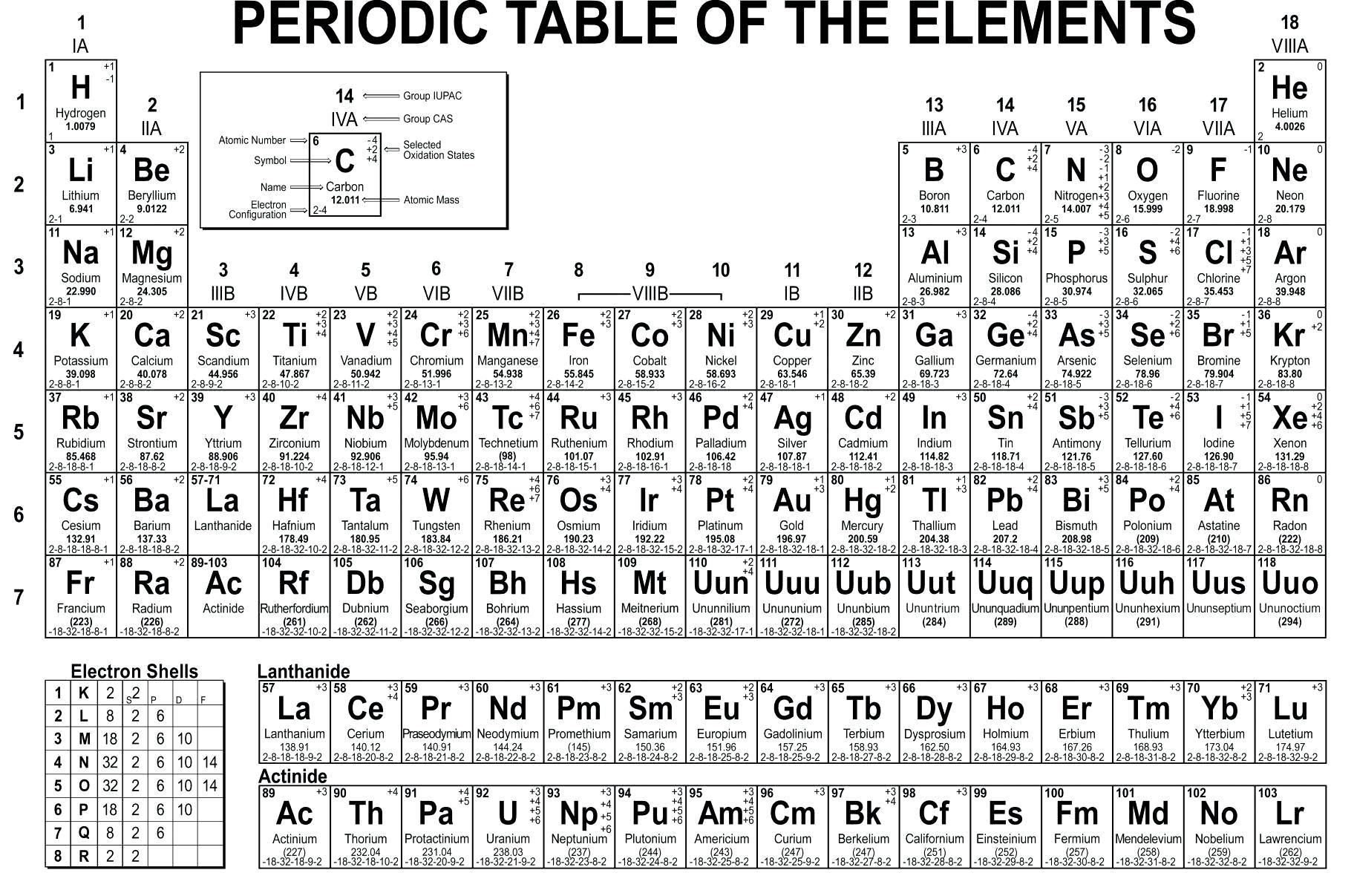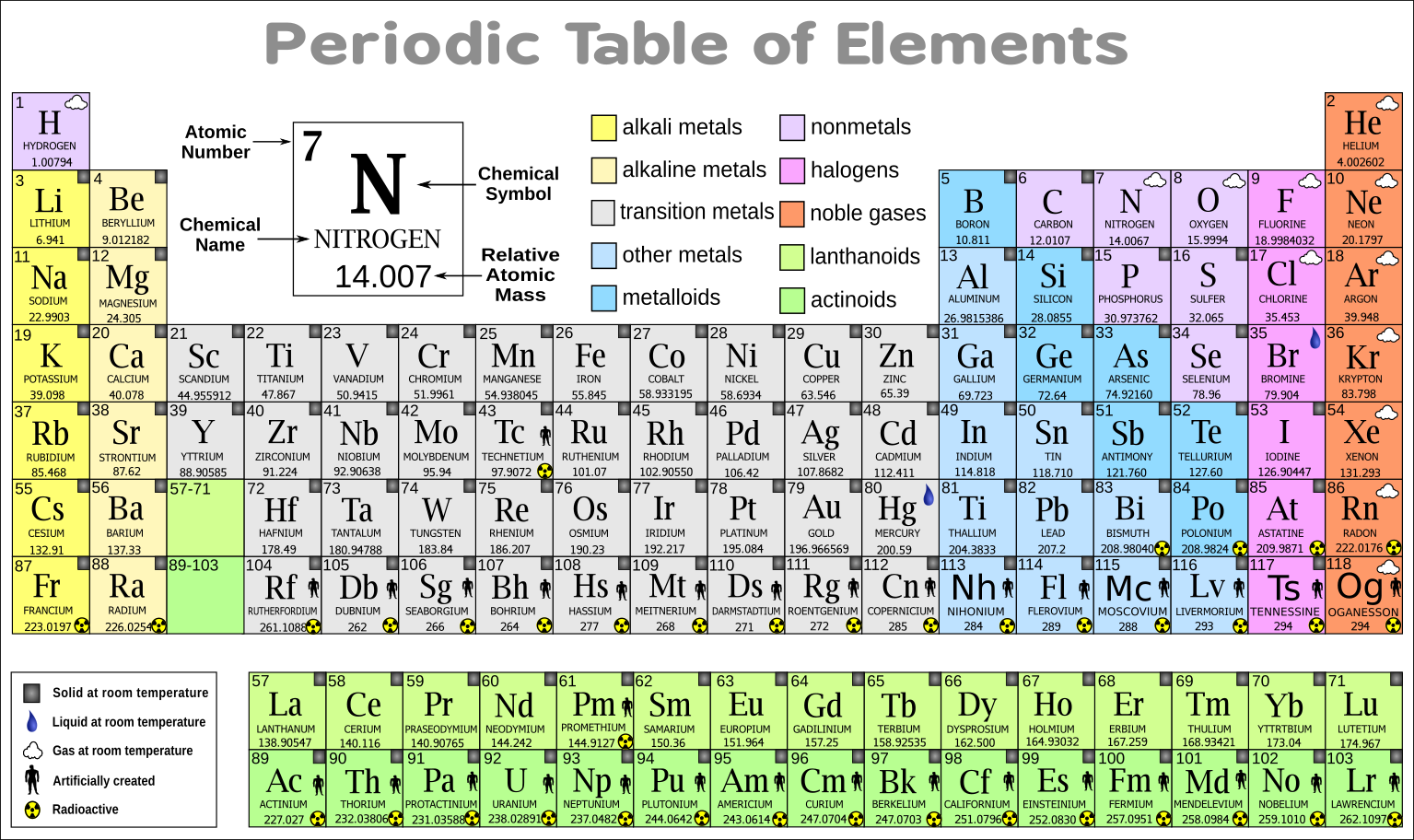

It’s true there have been bigger periodic tables made on sports pitches or glass-fronted buildings for world record attempts, but these don’t tend to stick around.

The biggest (permanent) periodic tableĪt the University of Murcia in Spain, the chemistry faculty building is decorated with 118 75×75cm metal element squares making up a 150m 2 periodic table, thought to be the biggest permanent one in existence (although we have heard a rumour another chemistry department is planning an even bigger one so watch out for that). But what better time than the International Year of the Periodic Table (IYPT) to look at some of the most notable examples? Here are a few that have caught our eye. The current table holds 117 elements in a very distinct order for the purpose of showing similarities. It would be impossible to count all the times it has been reimagined and recreated over the years. The structure of the periodic table is very significant. It is fair to say it’s come a long way since then, evolving through countless tweaks, revisions and updates into a thing of beauty that is instantly recognisable to scientists and non-scientists alike. They will be introduced to the basic information given for the elements in most periodic tables: the name, symbol, atomic number, and atomic mass for each. The only thing left is to open a Pull Request.150 years ago, the periodic table was just a few ordered lists of element symbols and atomic masses hastily scribbled by Dmitry Mendeleev on the back of an invitation to a cheese factory. For every science student, the first thing that they learn. To finish you can edit the README.md file to show that a new language is supported. The modern periodic table is a foundation for understanding the properties of chemical elements. Here too you can take as example what is done in this file for other languages. You can take as example what was done for the first languages supported (ENGLISH, FRENCH, RUSSIAN).Īlso some tricks need to be done in Makefile so that you would be able to run make nl ( nl being the newly added language) to build your work to PDF. To add a new language, add to the file the Tex variables for your new language. Translations are placed in the languages.tex file. To build files for a specific language you would have to run make fr Add a new language

#Most detailed printable periodic table of elements pdf#
ContributeĪfter editing one of these files you can build the PDF using Make.įor example to build every files with all the different options, you can run make or make all Versions Languagesįiles suffixed with extra have extra informations: labels of groups and periods, more detailed colored categories of elements. This project introduce different versions to the original tables: various level of details and multiple languages. The table is based on Ivan Griffin's and Paul Danese's creations and edits of a Latex Periodic table of elements. You can also clone the project and build them with make. PDF files of the periodic tables are availables on GitHub, in the Releases category. Click on the column header to sort the table by that column or click on an element name to get detailed facts about the element. Solid at room temperature Liquid at room temperature Gas at room temperature Radioactive Artificially Made. Printable multilingual versions of the Periodic table of elementsĪ printable Periodic table of element in multiple languages written in Tex / LaTeX. Here's a list of all of the chemical elements of the periodic table ordered by increasing atomic number. Atomic Number Chemical Symbol Atomic Weight Chemical Name Number of Protons Number of Electrons Number of Protons Number of Neutrons+.


 0 kommentar(er)
0 kommentar(er)
